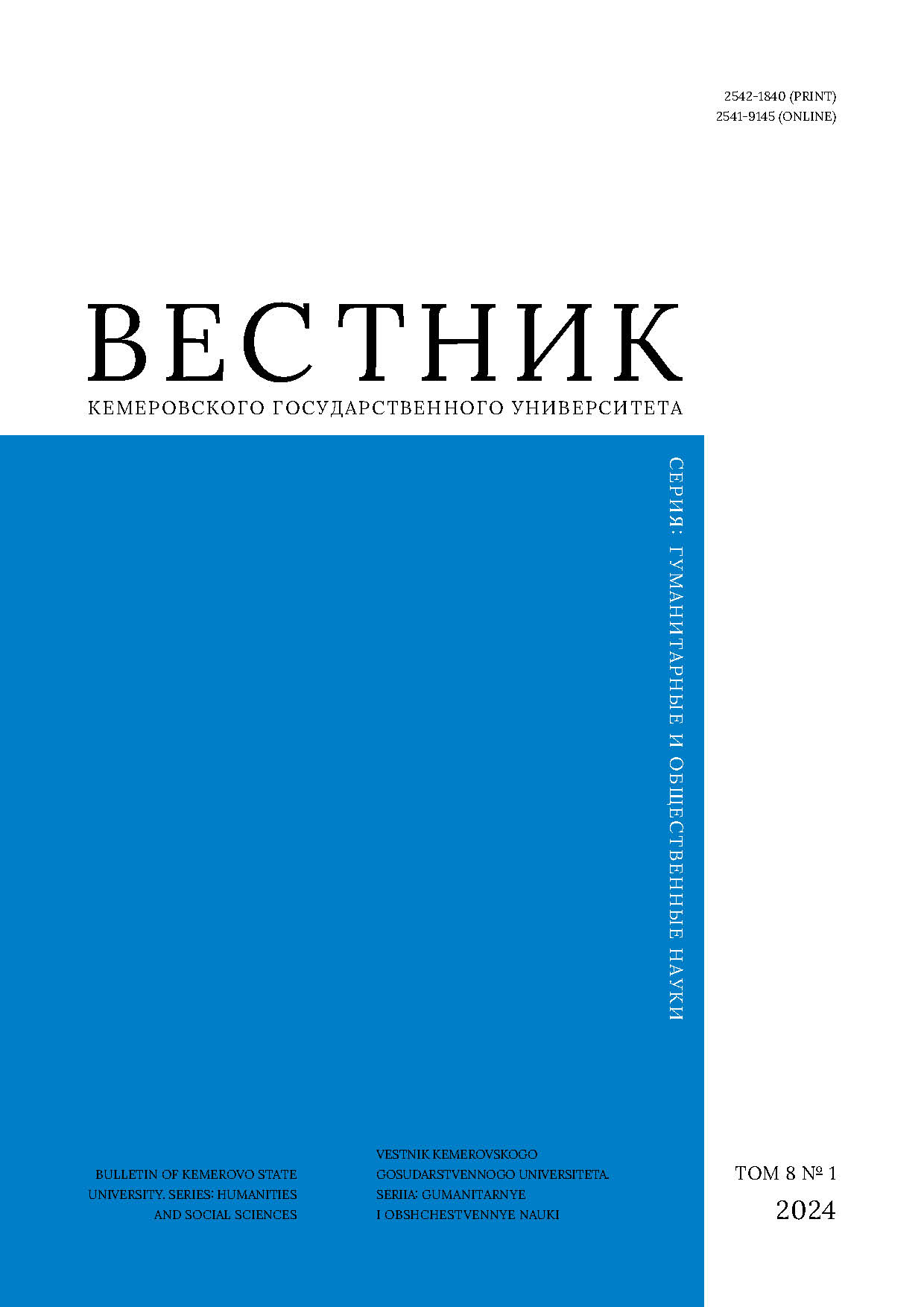Kemerovo, Russian Federation
Kemerovo, Russian Federation
Kemerovo, Russian Federation
Cognitive development and speech activity of children operated for congenital heart disease (CHD) remain understudied both from the point of view of psychology and linguistics. The aim was to identify differences in the means of lexical cohesion these groups of teenagers use to create oral texts. This article describes, classifies, and compares the means of lexical coherence in oral texts created by teenagers (13–15 y.o.) with congenital heart disease (focus group, 28 respondents) and their apparently healthy peers (control group, 28 respondents). The material was collected using the diagnostic method introduced by of T. A. Fotekova and T. V. Akhutina: the respondents were asked to talk about their hometown. The statements were analyzed for means of lexical cohesion. The analysis was complicated by the fact that most focus group respondents actually failed to produce a monologue: on average, one response involved 8.5 motivating and encouraging remarks from the interviewer (3.5 in the control group). As a result, cases of lexical cohesion between the interviewer’s questions and the respondent’s answers were not taken into account. The results showed an imbalance of lexical repetition: 64 cases in the focus group vs. 100 cases in the comparison group, 12 cases of synonymous repetition vs. 7, and 11 cases of antonymic repetition vs. 6, respectively. Hyper-hyponymous repetition was poorly represented: only 3 cases in the focus group vs. 6 in the control group. Although lexical repetition was the main means of cohesion, the teenagers with congenital disorders resorted to this method much less often than their apparently healthy peers.
cognitive studies of language and speech, speech coherence, means of speech cohesion, cognitive speech features, cohesion
1. Ivanova T. A., Morozova S. V., Reuka Y. D. Ontogeny of coherent speech. Modern Problems of Science and Education, 2021, (3). (In Russ.) https://doi.org/10.17513/spno.30818 EDN: https://elibrary.ru/NWZLPX
2. Givón T. Coherence in Text, Coherence in Mind. In: Gernsbacher M. A. , Givón T. Coherence in Spontaneous Text. Philadelphia, PA; Amsterdam: John Benjamins, 1995, 59-115. https://doi.org/10.1075/tsl.31.04giv
3. Gernsbacher M. A., Givón T. Coherence in spontaneous text. Amsterdam; Philadelphia: John Benjamins, 1995, 267.
4. Chui K. Conversational coherence and gesture. Discourse Studies, 2009, 11(6): 661-680. http://dx.doi.org/10.1177/1461445609347230
5. Levy E. T. The roots of coherence in discourse. Human Development, 2003, 46(4): 169-188. http://dx.doi.org/10.1159/000070367 EDN: https://elibrary.ru/GMCRZH
6. Elvevåg B., Foltz P.W., Weinberger D. R., Goldberg T. E. Quantifying incoherence in speech: An automated methodology and novel application to schizophrenia. Schizophrenia research, 2007, 93(1-3): 304-316. http://dx.doi.org/10.1016/j.schres.2007.03.001
7. DeLisi L. E. Speech disorder in schizophrenia: review of the literature and exploration of its relation to the uniquely human capacity for language. Schizophrenia bulletin, 2001, 27(3): 481-496. https://doi.org/10.1093/oxfordjournals.schbul.a006889
8. Mueller A. S., McDonald D. M., Singh H. S., Ginns J. N. Heart failure in adult congenital heart disease: tetralogy of Fallot. Heart Failure Reviews, 2020, 25(4): 583-598. https://doi.org/10.1007/s10741-019-09903-0 EDN: https://elibrary.ru/CRZSHQ
9. Tairova S. B., Mukhtorov A. A., Ziyodullaeva M. S. Neurocognitive disorders in children with congenital heart defects (literature review). Science and Education, 2023, 4(2): 543-548. (In Russ.)
10. Marino B. S., Lipkin P. H., Newburger J. W., Peacock G., Gerdes M., Gaynor J. W., Mussatto K. A., Uzark K., Goldberg C. S., Johnson W. H. Jr., Li J., Smith S. E., Bellinger D. C., Mahle W. T. Neurodevelopmental outcomes in children with congenital heart disease: Evaluation and management: A scientific statement from the American Heart Association. Circulation, 2012, 126(9): 1143-1172. https://doi.org/10.1161/cir.0b013e318265ee8a
11. Barker M. S., Young B., Robinson G. A. Cohesive and coherent connected speech deficits in mild stroke. Brain and Language, 2017, 168: 23-36. https://doi.org/10.1016/j.bandl.2017.01.004
12. Zhang M., Geng L., Yang Y., Ding H. Cohesion in the discourse of people with post-stroke aphasia. Clinical Linguistics & Phonetics, 2021, 35(1): 2-18. https://doi.org/10.1080/02699206.2020.1734864
13. Alyahya R. S. W., Halai A. D., Conroy P., Lambon Ralph M. A. Content word production during discourse in aphasia: Deficits in word quantity, not lexical-semantic complexity. Journal of Cognitive Neuroscience, 2021, 33(12): 2494-2511. https://doi.org/10.1162/jocn_a_01772
14. Davis G. A., O’Neil-Pirozzi T. M., Coon M. Referential cohesion and logical coherence of narration after right hemisphere stroke. Brain and Language, 1997, 56(2): 183-210. https://doi.org/10.1006/brln.1997.1741
15. Hoffman P., Cogdell-Brooke L., Thompson H. E. Going off the rails: Impaired coherence in the speech of patients with semantic control deficits. Neuropsychologia, 2020, 146. http://dx.doi.org/10.1016/j.neuropsychologia.2020.107516
16. Alyahya R. S. W., Lambon Ralph M. A., Halai A., Hoffman P. The cognitive and neural underpinnings of discourse coherence in post-stroke aphasia. Brain Communications, 2022, 4(3). https://doi.org/10.1093/braincomms/fcac147 EDN: https://elibrary.ru/ZXODKC
17. Olness G. S. Genre, verb, and coherence in picture-elicited discourse of adults with aphasia. Aphasiology, 2006, 20(2-4): 175-187. http://dx.doi.org/10.1080/02687030500472710
18. Grishuchkova I. B. Some types of cohesion in speech texts of animalistic genre. Vestnik Stavropolskogo gosudarstvennogo universiteta, 2008, (5): 68-74. (In Russ.) https://www.elibrary.ru/jvnlap
19. Fotekova T. A., Akhutina T. V. Diagnosis of speech disorders in schoolchildren using neuropsychological methods: a manual for speech therapists and psychologists. Moscow: ARKTI, 2002, 136. (In Russ.) https://www.elibrary.ru/qrvenb
20. Smolnikova N. G. Development of coherent speech in senior preschool children. Pedagogical Education and Science, 2011, (12): 21-23. (In Russ.) https://www.elibrary.ru/tsecpb
21. Wang Q., Sheremetyeva E. S. The role of textual binding element "Now about..." in the text structure. Litera, 2021, (4): 93-103. (In Russ.) https://doi.org/10.25136/2409-8698.2021.4.35483
22. Androsova L. M. Implicit means of coherence of the surface structure of the text. Problems of development of legal and socio-economic sciences in Russia: Proc. Conf. Moscow, 16-17 Mar 2001. Moscow: RNU, 2001, 80-85. (In Russ.) https://www.elibrary.ru/rvzfzb
23. Gordeyeva M. N. Peculiarities of cohesion realization in official texts. Vestnik Kemerovskogo gosudarstvennogo universiteta, 2012, (4-3): 128-134. (In Russ.) https://www.elibrary.ru/pyiykn
24. Belyanin V. P. Fundamentals of psycholinguistic diagnostics: models of the world in literature. Moscow: Trivola, 2000, 248. (In Russ.)






















